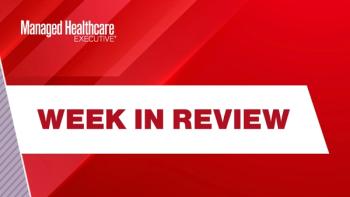
Top 3 Capabilities Health Execs Need in Care Management Technology
The right technology will enable increased population health efficiencies while simultaneously reducing the resource burden associated with managing that effort. Here are three specific capabilities to look for.
Today’s health plans that focus on care management have ambitious goals-optimize member health, operate more profitably, deliver greater value to stakeholders, and strategically align with regulatory performance imperatives. Technology is a critical enabler of these goals, and health plans that deploy the right end-to-end care management technology get significant ROI on two levels: cost savings and top-line revenue improvement.
The right care management technology should address the whole person across the care continuum, while comprehensively supporting care team efforts to improve outcomes one member at a time. It should enable increased population health efficiencies while simultaneously reducing the resource burden associated with managing that effort.
Here are three key considerations for extracting the greatest value from care management technology:
- It should address gaps in code capture
Every Medicare Advantage plan falls within the parameters of the Five-Star Rating Program from CMS. Designed to measure performance across nine domains, this program determines a health plan’s reimbursement level. The unfortunate reality for many health plans is that codes impacting performance often get missed. For instance, for CMS to reimburse for diabetes care, a physician falling within a payer’s network must re-enter the appropriate Hierarchical Condition Category code every year designating the condition regardless of any patient interaction.
Infrastructure ROI is directly tied to accurate capture of claims codes. Advanced care management solutions streamline work flows by automating capture of accurate diagnosis-related groups and ICD-10 codes, ensuring submission of a clean claim and speeding revenue cycle processes. Additionally, the right platform addresses potential gaps in code capture and helps payers stay compliant with evolving regulations.
2. It should deliver actionable insights and resource access
The primary goal of any technology investment is to improve member health and decrease care costs. This means health plan executives must be able to tie bottom-line improvements to tangible outcomes such as reduced hospitalizations, decreased high-cost interventions, or the lower medication consumption.
Achieving this objective requires drilling population health initiatives down to the individual member level. As such, the value proposition of a care management platform is tied to its ability to support person-centered care drawn from a “whole-person” patient view.
Accurate code capture is one piece of this equation. Others include support for interdisciplinary collaborative work flows and actionable interventions drawn from real-time access to social determinants of health data, social services, and robust analytics. For instance, when care managers are aware of transportation needs, they can proactively intervene to help patients get to medical appointments. Care management platforms that deliver both actionable insights and resource access improve the effectiveness of outreach efforts.
3. It should provide a highly-configurable, interoperable framework
In the past, care management platforms struggled to provide the flexibility needed to enable the deep analysis required to truly impact population health outcomes. To achieve the highest ROI on a technology investment, payers must draw on highly-configurable, cloud-based infrastructures that integrate disparate legacy solutions and provide broad-spectrum interoperability.
This means that data can be aggregated from a variety of disparate sources and shared across the healthcare continuum in a meaningful way-without requiring additional investments in writing new computer codes or to address complex interface issues before value can be realized.
Additionally, cloud-based solutions naturally lend to lower cost of ownership through highly-modular designs that require minimal ongoing management. They eliminate the need for additional resources to address security and disaster recovery, which are addressed by cloud vendors, and software updates and enhancements can be pushed out on demand.
The significant potential of care management technology is increasingly evident, especially when stakeholders thoughtfully consider how to optimize their investments. As health plans consider the most effective approach to improving member health, these three technological considerations should be top of mind.
As the chief client officer at VirtualHealth, Sheela Ramamurthy strengthens the company’s position as a leader in care management by building impactful processes and functionalities designed to achieve the best possible outcomes for patients. Prior to joining VirtualHealth, she led clinical operations and technology optimization for the Government Programs Division at the Health Care Service Corporation (HCSC), one of the country's largest health insurance companies.
Newsletter
Get the latest industry news, event updates, and more from Managed healthcare Executive.

















































